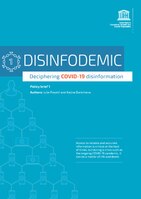
Photo from wikipedia
Abstract Two thousand nineteen novel coronavirus SARS-CoV-2, the pathogen of COVID-19, has caused a catastrophic pandemic, which has a profound and widespread impact on human lives and social economy globally.… Click to show full abstract
Abstract Two thousand nineteen novel coronavirus SARS-CoV-2, the pathogen of COVID-19, has caused a catastrophic pandemic, which has a profound and widespread impact on human lives and social economy globally. However, the molecular perturbations induced by the SARS-CoV-2 infection remain unknown. In this paper, from the perspective of omnigenic, we analyze the properties of the neighborhood perturbed by SARS-CoV-2 in the human interactome and disclose the peripheral and core regions of virus-host network (VHN). We find that the virus-host proteins (VHPs) form a significantly connected VHN, among which highly perturbed proteins aggregate into an observable core region. The non-core region of VHN forms a large scale but relatively low perturbed periphery. We further validate that the periphery is non-negligible and conducive to identifying comorbidities and detecting drug repurposing candidates for COVID-19. We particularly put forward a flower model for COVID-19, SARS and H1N1 based on their peripheral regions, and the flower model shows more correlations between COVID-19 and other two similar diseases in common functional pathways and candidate drugs. Overall, our periphery-core pattern can not only offer insights into interconnectivity of SARS-CoV-2 VHPs but also facilitate the research on therapeutic drugs.
Journal Title: Briefings in Bioinformatics
Year Published: 2021
Link to full text (if available)
Share on Social Media: Sign Up to like & get
recommendations!